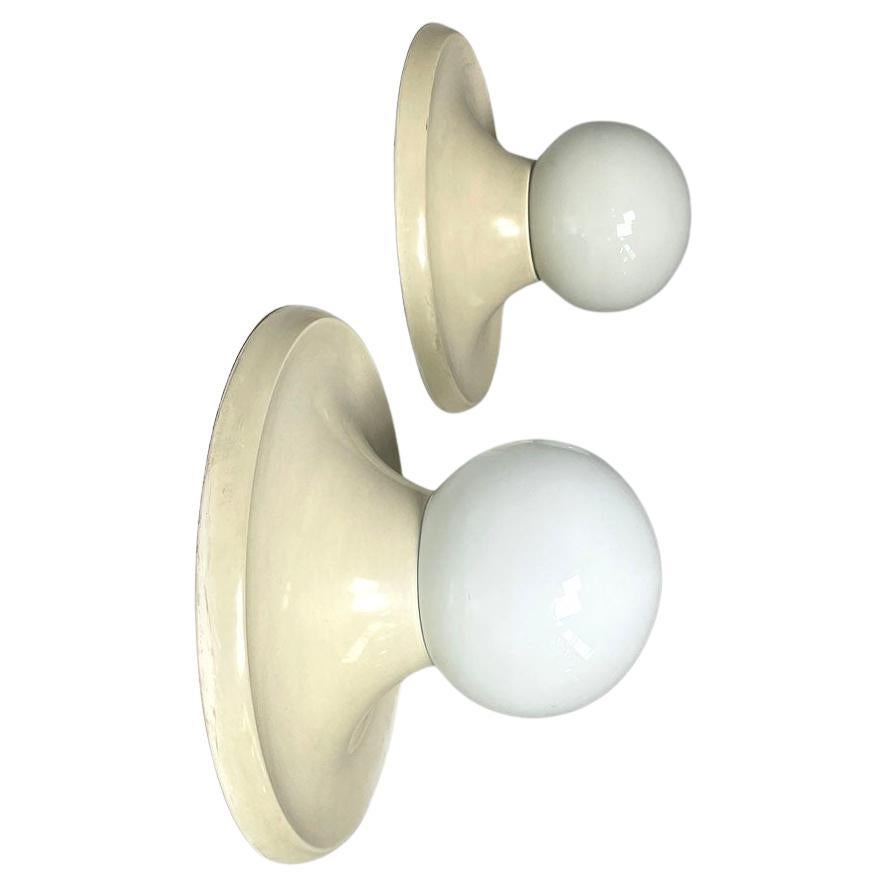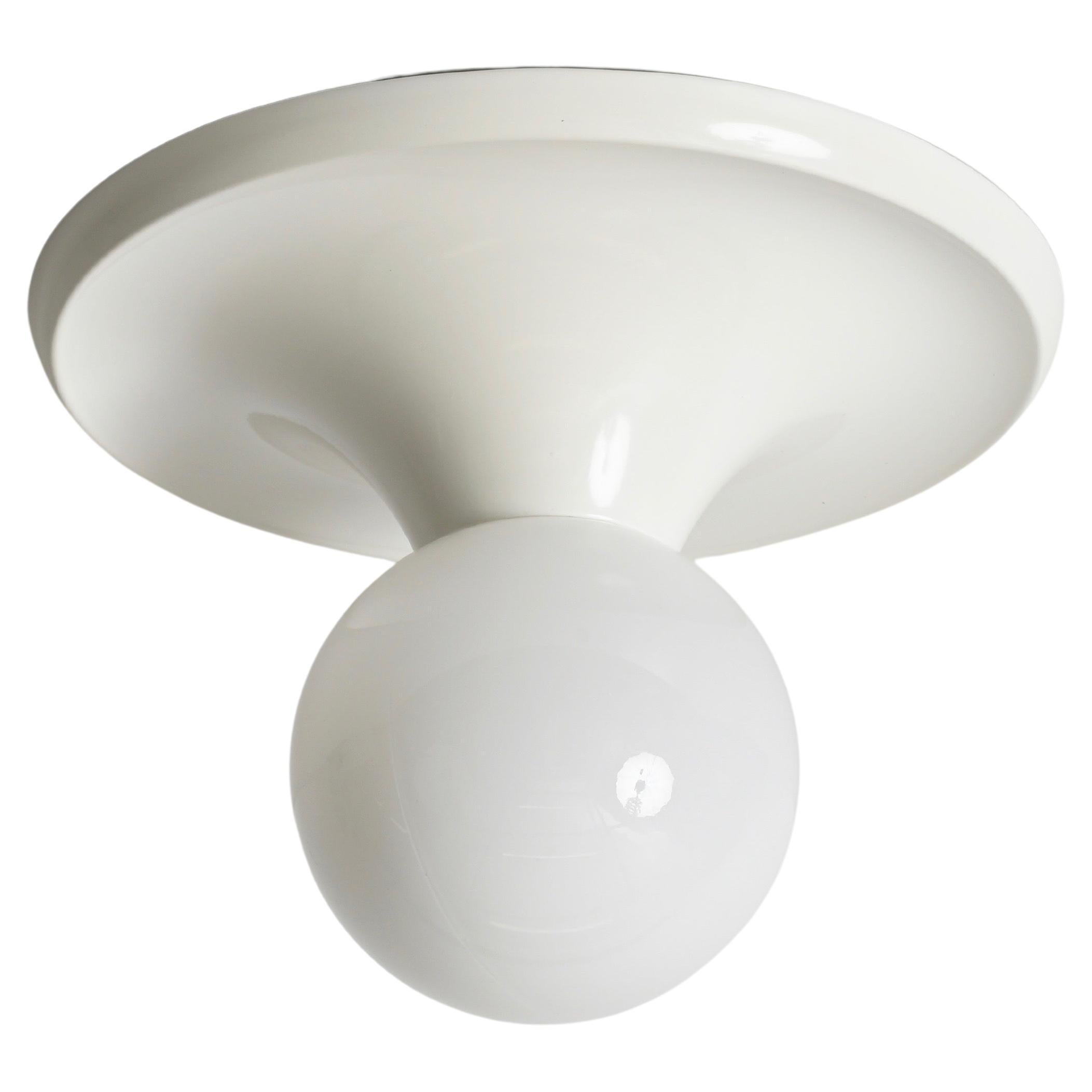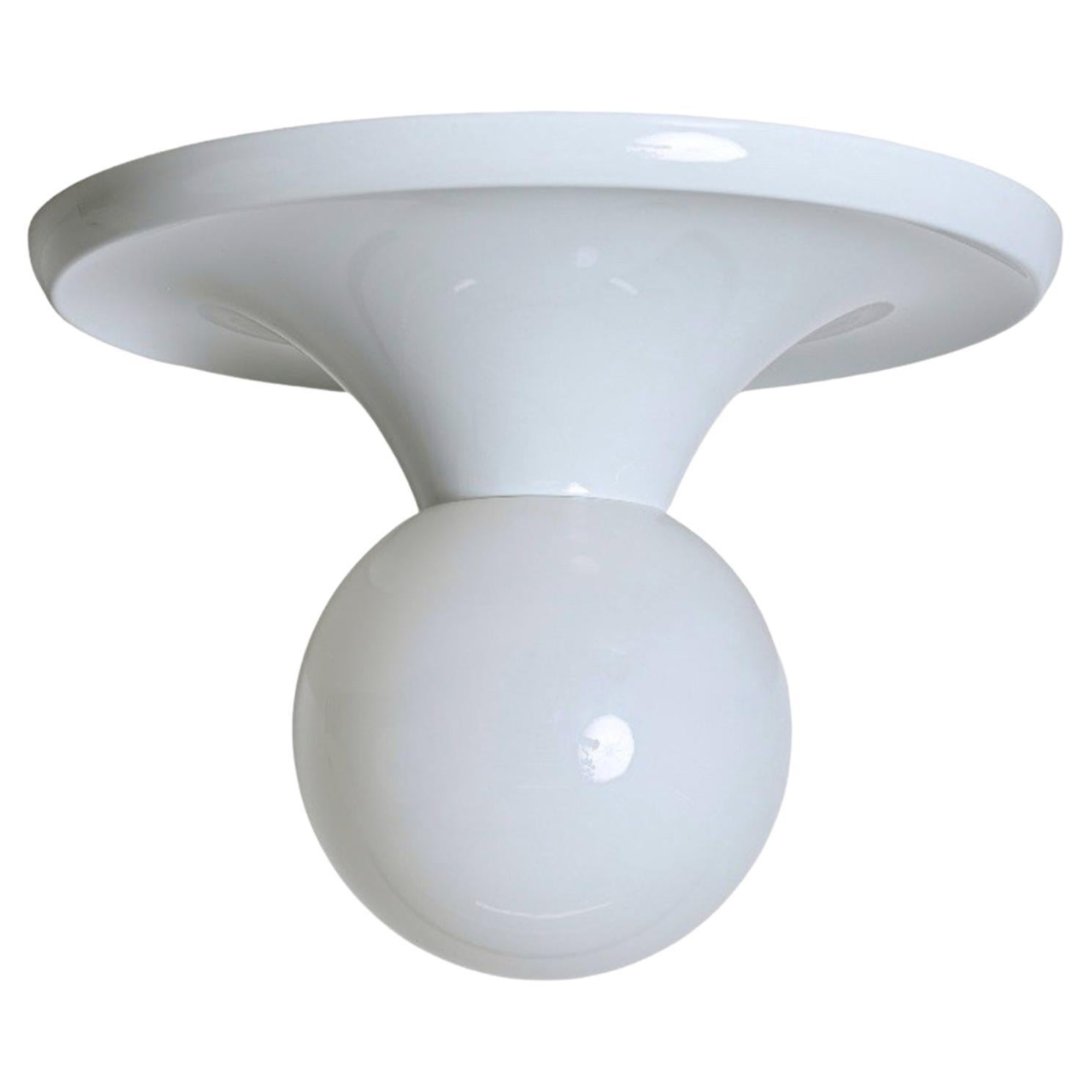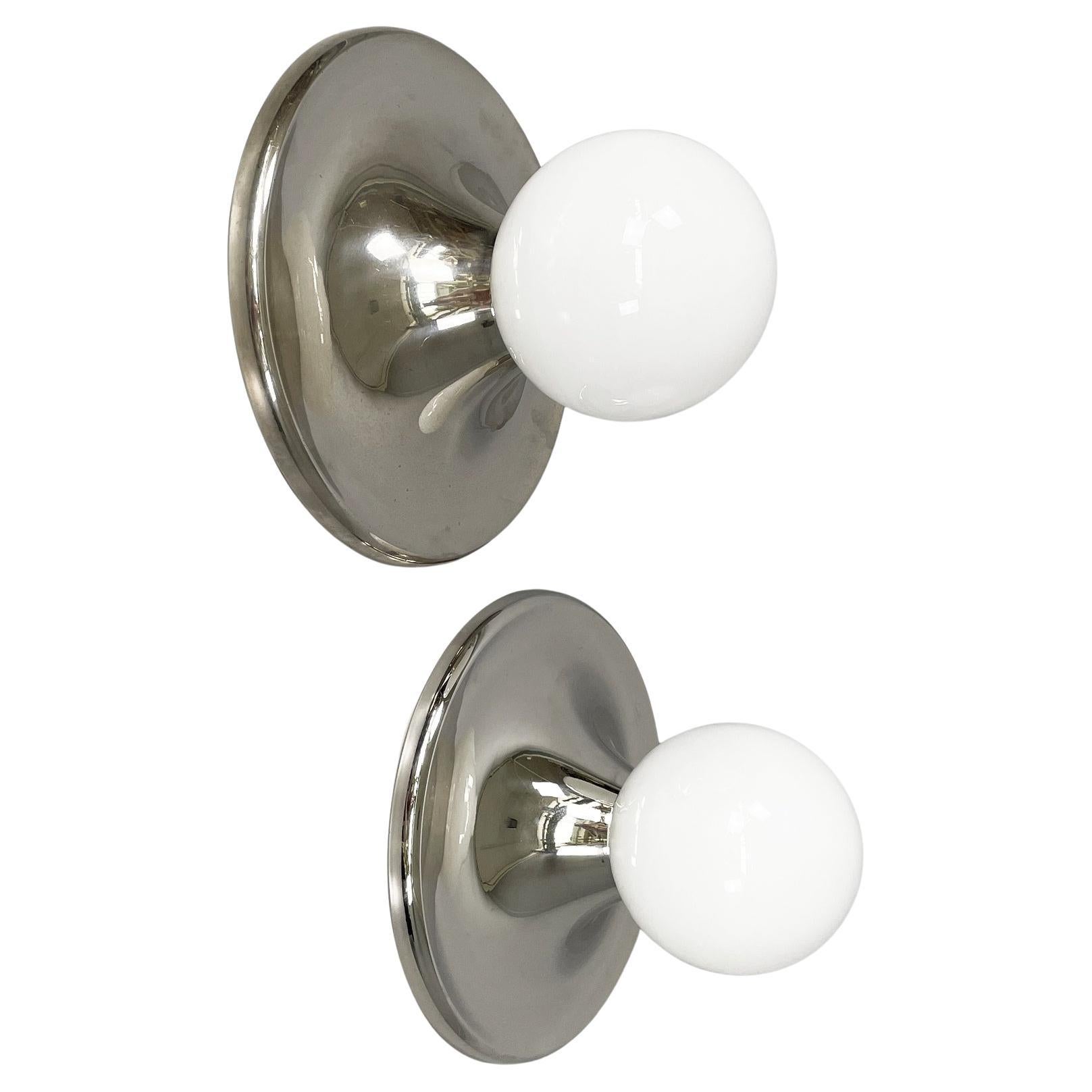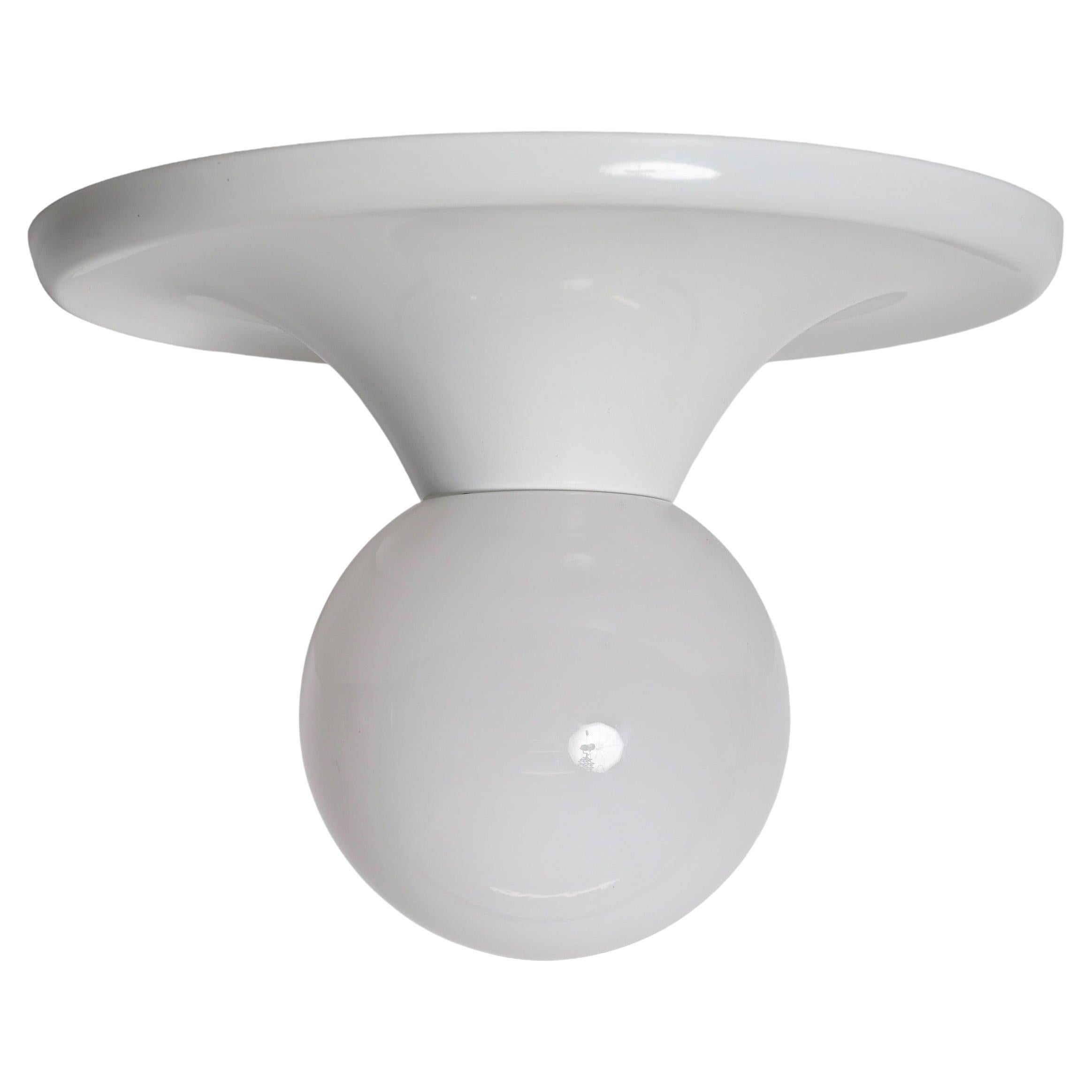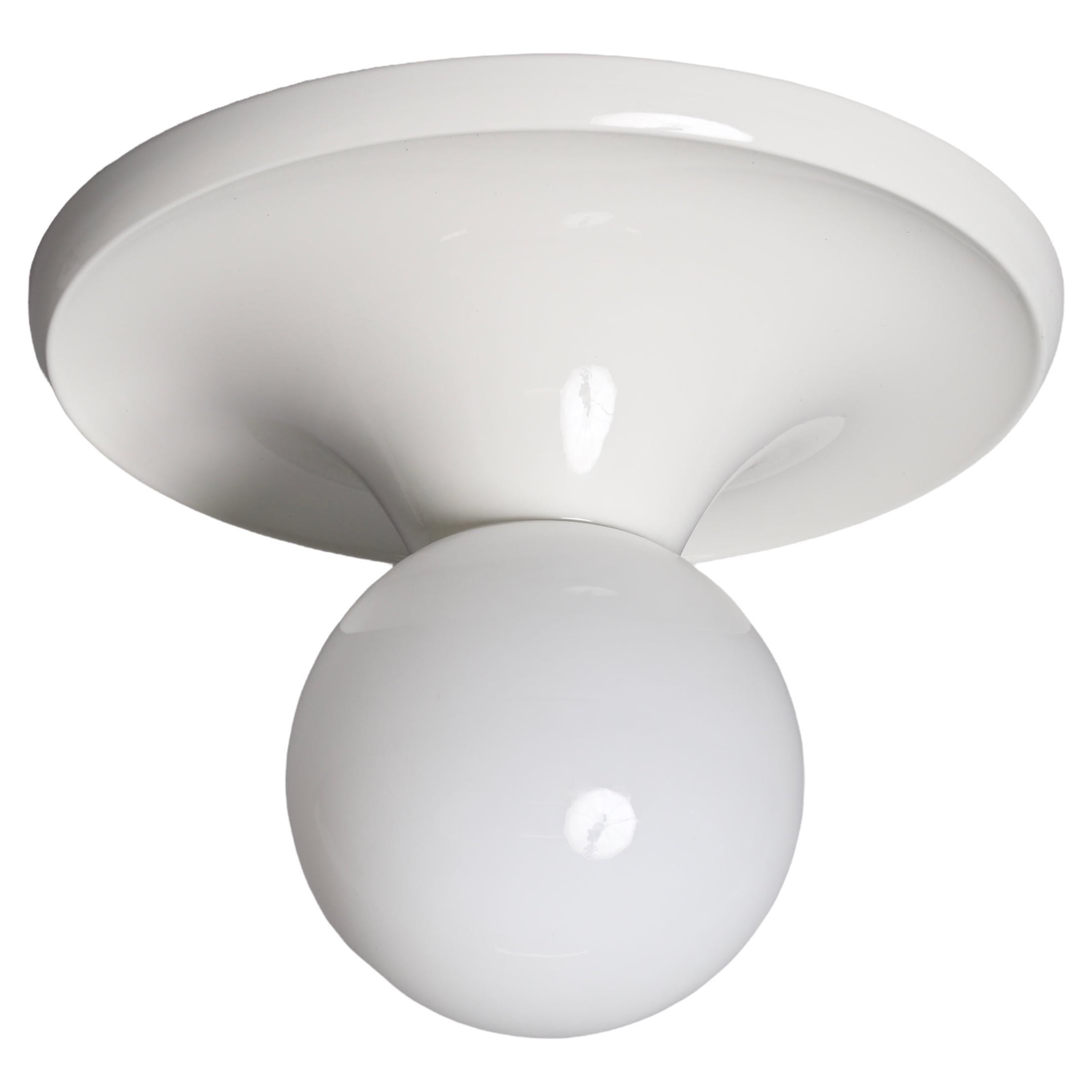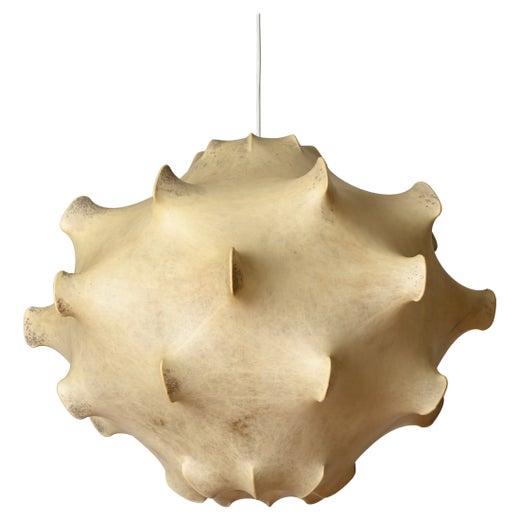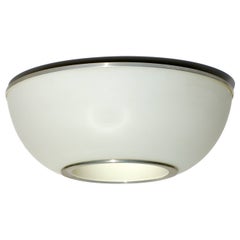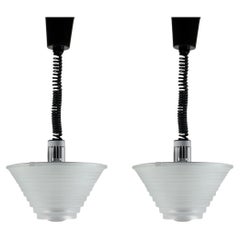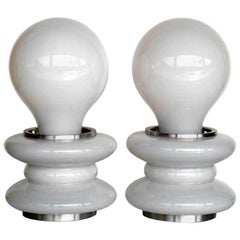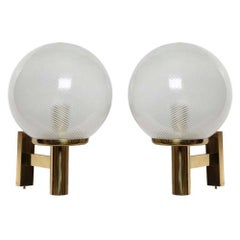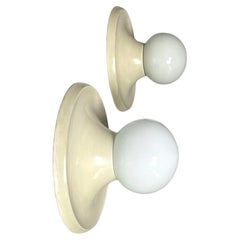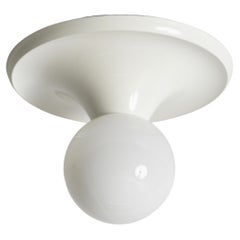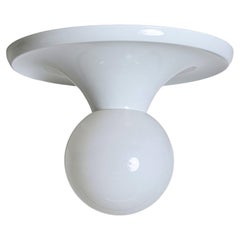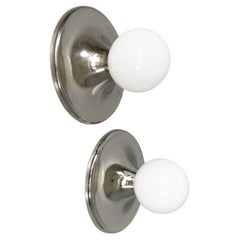"Light Ball" Castiglioni by Flos Italian Design White Flush Mont Pair of Lamps
About the Item
- Creator:Flos (Manufacturer),Achille & Pier Giacomo Castiglioni (Designer)
- Dimensions:Height: 10.63 in (27 cm)Diameter: 16.54 in (42 cm)
- Sold As:Set of 2
- Style:Mid-Century Modern (Of the Period)
- Materials and Techniques:
- Place of Origin:
- Period:
- Date of Manufacture:1965
- Condition:
- Seller Location:Brescia, IT
- Reference Number:1stDibs: LU3300111747223
Achille & Pier Giacomo Castiglioni
Milanese industrial designer-architects Achille and Pier Giacomo Castiglioni (1918–2002; 1913-68) created some of the most iconic furniture designs in the world, particularly those that originated in the realm of mid-century modern lighting.
In the late 1930s, after graduating from the acclaimed Polytechnic University of Milan, Pier Giacomo opened a design studio with his brother Livio and likeminded architect Luigi Caccia Dominioni. Achille, also a graduate of Milan Polytechnic, joined the group after completing his studies in 1944. The era’s architects were encountering difficulty in their attempts to secure building commissions, so the group focused on designing practical everyday objects such as the Model 547, a tabletop radio for Phonola that was encased in Bakelite.
The Castiglioni brothers produced wildly popular and innovative designs throughout the 20th century. While Livio departed the practice in 1952 to pursue lighting design and sound technology on his own, Pier Giacomo and Achille would continue to collaborate on a wealth of projects in the ensuing years.
Vintage furniture collectors may be familiar with Livio and Italian designer Gianfranco Frattini’s serpent-like Boalum lamp, while Achille’s Taraxacum hanging lamp — created for FLOS with sprayed plastic polymers originally intended for military use — as well as the Arco, Snoopy and Toio lamps, which were the result of the collaboration between Pier Giacomo and Achille, are milestones in modernist lighting design.
Also for FLOS, Pier Giacomo and Achille created a series of metal frames that, wrapped in the polymer, became floor lamps (Gatto) or pendant lights (Viscontea and Taraxacum), all released in 1960. The Gatto floor lamp takes its name from the Italian word for “cat” and the inspiration for its aesthetic from lighting that George Nelson developed for legendary American furniture manufacturer Howard Miller during the 1940s. Around the same time, the designer Tobia Scarpa (son of the famed Italian architect Carlo Scarpa and one-half of the widely revered postmodern husband-and-wife design duo Afra and Tobia Scarpa) created a floor lamp called Fantasma (1961) using the polymers technique. FLOS continues to make the Castiglionis’ innovative pieces today.
In addition to their provocative lighting works, Pier Giacomo and Achille also created stereo systems, decorative objects, seating, tables and other items for the likes of Brionvega, Alessi, Zanotta, Kartell and more.
Find vintage Achille and Pier Giacomo Castiglioni floor lamps, table lamps, pendants, seating and other furniture on 1stDibs.
Flos
Imaginative lighting is a longtime hallmark of modern Italian design. Following in the footsteps of innovative companies such as Artemide and Arteluce, the company FLOS brought a fresh aesthetic philosophy to the Italian lighting field in the 1960s, one that would produce several of the iconic floor lamp, table lamp and pendant light designs of the era.
FLOS — Latin for “flower” — was founded in the northern town of Merano in 1962 by Cesare Cassina (of the famed Cassina furniture-making family) and Dino Gavina, a highly cultured businessman who believed that artistic ideas espoused in postwar Italy could inform commercial design. The two enlisted brothers Achille and Pier Giacomo Castiglioni as their first designers.
Even before FLOS was formally incorporated, the Castiglionis gave the firm one of its enduring successes with the Taraxacum pendant and associated designs made by spraying an elastic polymer on a metal armature. (George Nelson had pioneered the technique in the United States in the early 1950s.) For other designs, the brothers found inspiration in everyday objects. Suggestive of streetlights, their Arco floor lamp, with its chrome boom and ball-shaped shade sweeping out from a marble block base, has become a staple of modernist decors. Designing for FLOS since 1966, Tobia Scarpa has also been inspired by the commonplace. His folded-metal Foglio sconces resemble a shirt cuff; his carved marble Biagio table lamp looks like a jai alai basket.
In 1973, FLOS purchased Arteluce, the company founded in 1939 by Gino Sarfatti, and it continues to produce his designs. In recent decades, FLOS has contracted work from several noted designers, including Marcel Wanders and Jasper Morrison. As instantly recognizable as they are, many FLOS designs remain accessible. While FLOS lighting is the essence of modernity, its sleek, subtle designs can be used to strike a sculptural note in even traditional spaces.
Browse a broad range of FLOS lighting fixtures at 1stDibs.
- ShippingRetrieving quote...Shipping from: Brescia, Italy
- Return Policy
More From This Seller
View AllVintage 1950s Italian Mid-Century Modern Flush Mount
Aluminum
Vintage 1970s Italian Mid-Century Modern Chandeliers and Pendants
Metal
Vintage 1960s Italian Space Age Table Lamps
Milk Glass
Vintage 1970s Italian Mid-Century Modern Wall Lights and Sconces
Brass
Vintage 1960s Italian Mid-Century Modern Chandeliers and Pendants
Aluminum
Vintage 1960s Italian Space Age Table Lamps
Metal
You May Also Like
Vintage 1960s Italian Mid-Century Modern Wall Lights and Sconces
Metal
Vintage 1960s Italian Mid-Century Modern Flush Mount
Metal
Vintage 1960s Italian Mid-Century Modern Flush Mount
Metal
Vintage 1960s Italian Mid-Century Modern Wall Lights and Sconces
Metal
Vintage 1960s Italian Mid-Century Modern Flush Mount
Metal
Vintage 1960s Italian Mid-Century Modern Flush Mount
Metal
Read More
We Dare You Not to Smile at These Whimsical Italian Designs
Make anyplace your happy place with Italian furniture at its subversive best.
Rooms We Love: 11 Splendid Living Rooms
Common wisdom used to declare the kitchen the hub of the house. These days, the living room seems to have assumed the role of domestic focal point. Unlike the Victorian parlor, stiffly furnished and reserved for guests, today’s living room is a central place for reading, conversation and, well, living, with furnishings that lend themselves to both casual lounging and elegant entertaining.
